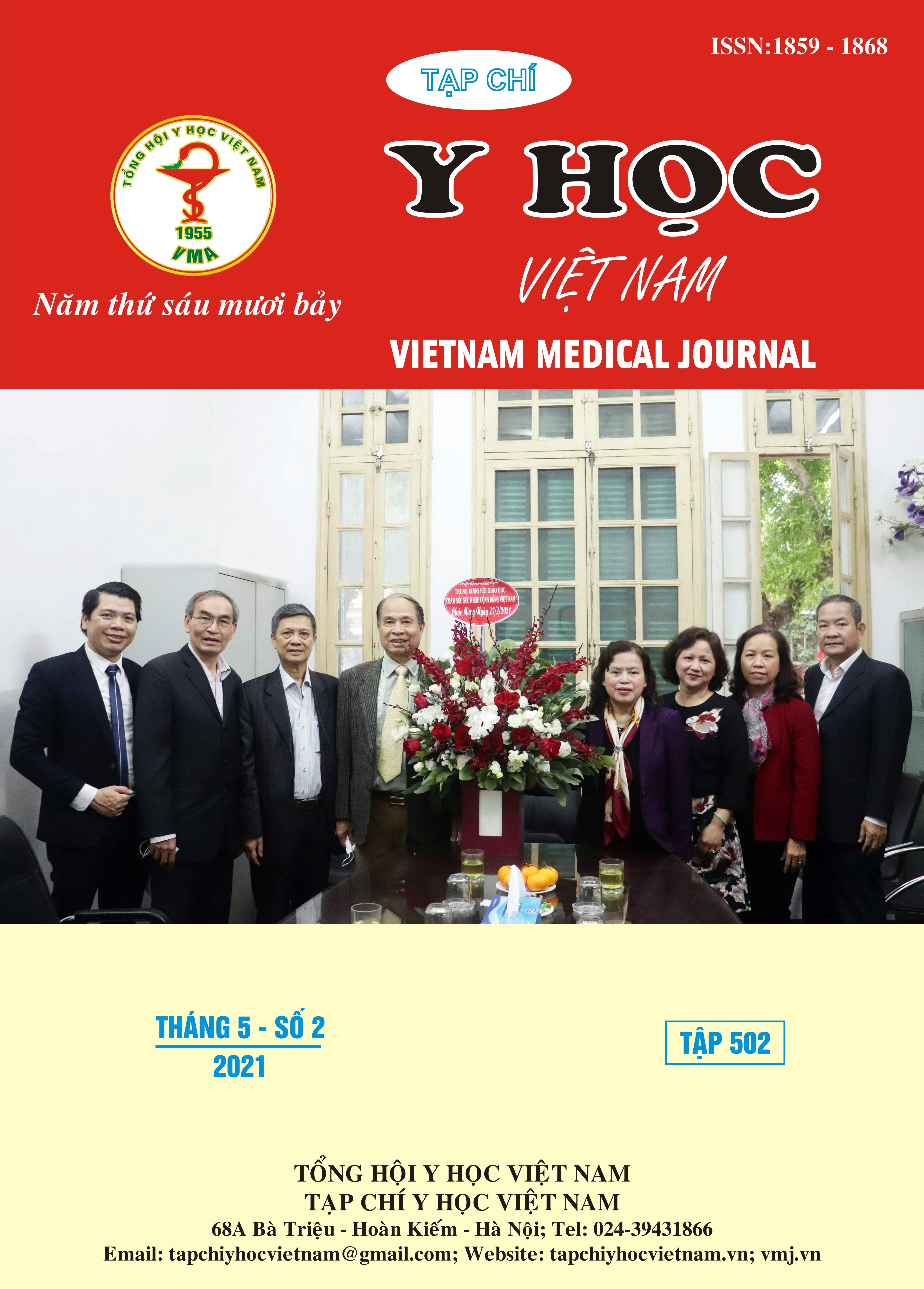EVALUATION OF THE EFFECT OF SURFACTANT THERAPY IN PREMATURE INFANTS WITH HYALINE MEMBRANE AT QUANG NGAI HOSPITAL FOR CHILDREN AND WOMEN
Main Article Content
Abstract
Background: Hyaline Membrane Disease, also known as Respiratory Distress Syndrome, is a fairly common condition in infants, especially preterm neonates, due to the lack of active substances (Surfactant) in the lungs. Exogenous Surfactant has been used for a long time, but most of the treatment has not achieved high results at Quang Ngai Hospital for Children and Women. We want to evaluate the effect of this therapy to draw on the experience and improve the quality of Surfactant replacement therapy in Hyaline Membrane Disease. Objectives: Describe clinical, subclinical characteristics and some related factors to premature infants with Hyaline Membrane Disease and its result treated with Surfactant therapy. Methods: Cross-sectional study, descriptive, retrospective entire medical records of preterm neonates with Hyaline Membrane Disease, with indications Surfactant therapy at Quang Ngai Hospital for Children and Women from January 1st, 2019 to June 30th, 2020. Results: Male/female ratio is similar (1/1,1); gestational age <32 weeks is 63,2%, with a mean of 30,1±3,1 weeks; the birth weight <2000 grams is 73,6%, with a mean of 1521±588 grams. Among the signs of respiratory distress appear early, intubated resuscitation at hospital admission is 47,4%, grunting (60%), hypothermia (71,9%), breathing disorders (63,3%), purple (40,4%). pH dropped below 7,25 accounts for 56,1%, reducing oxidation of blood from mild to severe is 82,5%. Lesions on lung X-ray II-III level accounts for 77,2%. Only sex is associated with statistical significance with the severity of the disease on X-ray film. Surfactant replacement therapy is remarkably effective when oxygen demand and respiratory acidosis conditions are rapidly improved after pumped 1 hour. X-ray lesions improve 96,5% after 6 hours of Surfactant pump. The mean mechanical ventilation duration is three days and the mean non-invasive mechanical ventilation duration is six days. The survival rate and the mortality rates after Surfactant therapy are 80% and 20%, respectively; The most complication within 24 hours after pumping is hypotension (15,8%), leading cause is a septic shock (58,3%). Conclusion: Surfactant replacement therapy in preterm neonates with Hyaline Membrane Disease at Quang Ngai Hospital for Children and Women brings a marked effect, reduces the oxygen demand after 1 hour of pumping, and improves 96.5% chest X-ray after 6 hours of pumping.
Article Details
Keywords
Hyaline Membrane Disease, neonates, Quang Ngai Hospital for Children and Women
References
2. Trần Thị Bích Phượng, Trần Tôn Nữ Anh Ty (2012), "Đánh giá hiệu quả điều trị Surfactant trong điều trị bệnh màng trong ở trẻ sinh non tại khoa hồi sức cấp cứu Bệnh viện Nhi Đồng Nai", Đề tài cấp tỉnh năm 2012.
3. Trần Thị Thủy, Ngô Thị Xuân (2017), "Kết quả phương pháp INSURE trong điều trị hội chứng suy hô hấp ở trẻ đẻ non tại Bệnh viện Sản Nhi Bắc Ninh năm 2017 ", Tạp chí Khoa học ĐHQGHN: Khoa học Y Dược, 33(2), tr.106-114.
4. Nakhshab M, Tajbakhsh M, Khani S, et al (2015), "Comparison of the effect of Surfactant administration during nasal continuous positive airway pressure with that of nasal continuous positive airway pressure alone on complications of respiratory distress syndrome: a randomized controlled study", Pediatrics & Neonatology, 56 (2), pp.88-94.
5. Nguyễn Viết Đồng, và cs (2018). Nghiên cứu điều trị bệnh màng trong ở trẻ đẻ non bằng liệu pháp Surfactant tại Khoa Nhi – Bệnh viện đa khoa tỉnh Hà Tỉnh.
6. Fujiwara T, Chida S, Watabe Y, et al (1980), "Artificial Surfactant therapy in hyaline-membrane disease", The Lancet, 315 (8159), pp.55-59.
7. Ramathan R, Rsmussen MR, Gerstmann D, et al (2004) "A randomized, multicenter masked comparison trial of Curosuff versus Survanta in the treatment of respiratory distress syndrome in preterm infant", AJP, 21(3), pp.109- 119.


